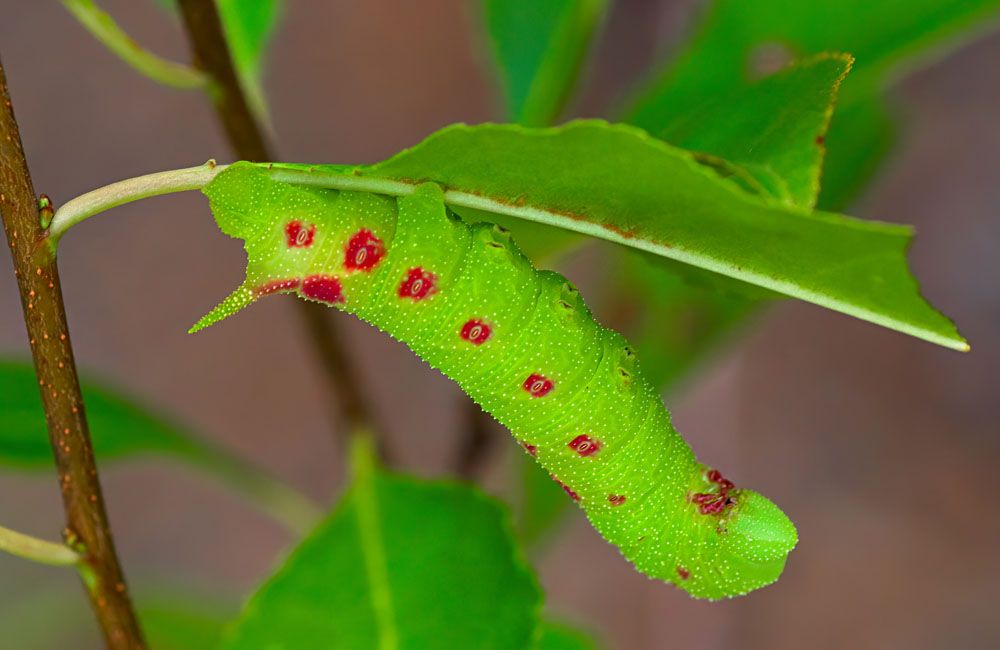
Twinspot Sphinx – Smerinthus jamaicensis
Twinspot Sphinx (Smerinthus jamaicensis)
Common Name: Twinspot Sphinx
Latin Name: Smerinthus jamaicensis
Appearance:
Adult moths have a wingspan of about 3 to 4 inches. They are brownish-gray and have pinkish-orange spots on the back edges of their hindwings that make them stand out.
- Egg:The adult female moths usually lay their eggs on the host plants.
- Larva:During this stage, caterpillars are usually green and may have lines across their sides. Some caterpillars may also have a “horn” at the end, a trait of sphinx moth larvae.
- Pupa:The worm makes a protective cocoon in the dirt, where pupation occurs.
- Adult:Moths that are adults only come out at night and have long, thin wings that make them look strong.
